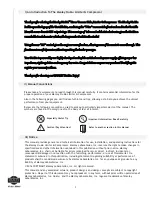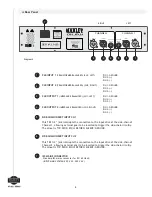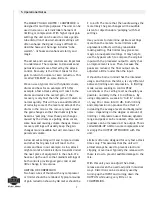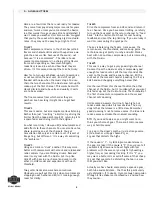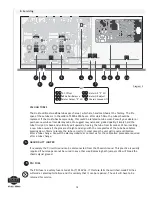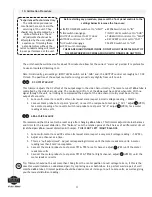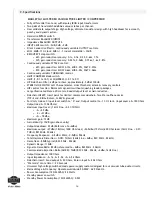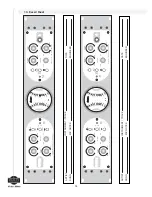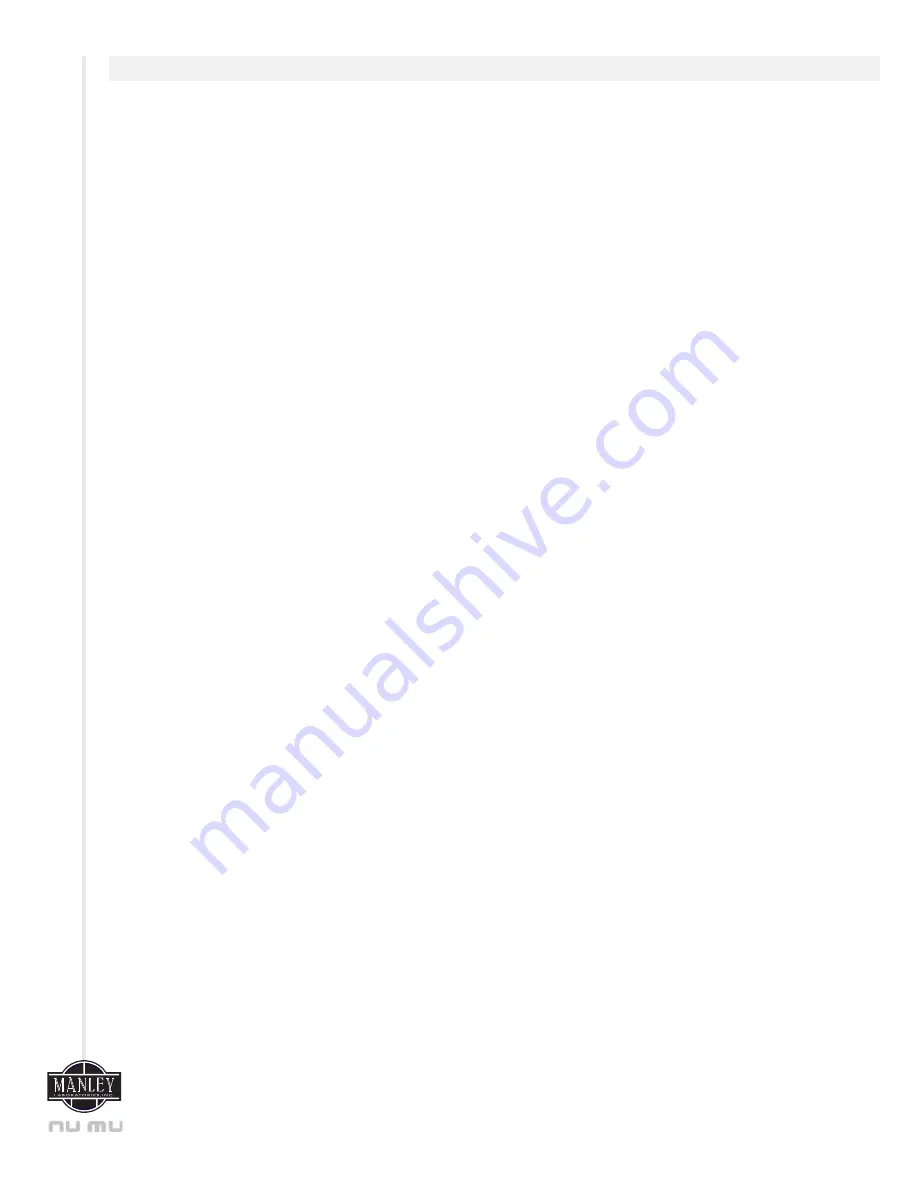
8
6. Advanced Tricks
Here are a few tricks that are not really for rookies.
They come from guys doing major records for years
and won’t work unless you’ve mastered the basics.
In other words if we gave you a Strat and Marshall it
won’t make you another Jimi. Also we don’t suggest
that you try these out while paying big-time studio
rates - they may not be easy to get right at first.
Trick#1
Each compressor or device in the chain has certain
flavors and characteristics and with experience we
grab the ones we like because of the sound - not
because “it is a compressor”. The idea is to use
several cool compressors in a chain getting flavors
from each depending on how much GR (gain
reduction) is used in each and how hard they are
driven. It’s this second concept that can be tricky.
How far to turn up each Make-up Gain to overdrive
or not overdrive the next unit - and still not get
flooded with noise when the music stops. You can
chain the two channels of the Nu Mu and turn up the
make-up of the first channel. This works best with
classic discrete and tube units and usually IC units
are to be avoided.
The finesse comes from which order they are
patched. See how long it might take to get best
results.
Trick#2
This one is easier, but also requires serious listening.
Rather than just “inserting” a limiter, try driving the
limiter from the tape patch (pre EQ), returning it to
a spare fader and mixing it with the original.
So what is so tricky ? How you EQ and automate and
add effects to these channels. You can also have fun
phase reversing one of the channels. You get
cancellation but only at a certain level. It is sort of
like gating, but different - it is a way of controlling
the “ambiance”.
Trick#3
Using one track to “duck” another. This may work
better with compressors with attack and release and
ratio controls if you are thinking drums. Bass and
vocal is very cool with the Nu Mu. Set it up like
trick#2 with bass in one channel and vocal in the
other (in LINK mode) and experiment with each
threshold.
Two guitar tracks also work here sometimes.
Obviously, we pull out this trick when two tracks are
stepping on each other and EQ isn’t making enough
room for clarity.
Trick#4
Drive the compressor from an AUX send and return it
to a channel. Once you have some limiting, carefully
turn up that aux send on the return channel to “feed
back” into the limiter. Watch out for real howling
feedback and over the top limiting. If you are lucky it
won’t scream during the quiet parts.
The key is balancing the faders, track auxes, the
return auxes, the thresholds, and make-up gains. The
technique can get pretty crunchy and wild. Works
best with not-so-clean compressors, but is interesting
with the Nu Mu.
Trick#5
This one is a way to get a very good single channel
De-esser from the Nu Mu or other compressor good
enough for lead vocals. Split the Insert send of the
vocal to the Nu Mu and to a spare channel. EQ the
snot out of that second channel -boosting the 5 or 6
kHz band and chopping everything below that.
Use the insert from this channel to drive the other
channel of the Nu Mu, but it is unlikely that you want
this fader up. Set the Nu Mu to Link. The threshold of
the first channel sets compression and the second
channel sets de-essing.
Unlike some de-essers it will not chop highs, but
reduce wide-band which is less obvious. The only
drag is that the release is a little slow. Remember
good de-essing is not to remove esses - the idea is to
reduce esses and make them natural sounding.
BTW if you need to de-ess, you might want to re-
think your choice of gear. There are 3 main reasons
we get horrible esses:
1) a gap in the singer’s teeth or just a strange voice,
2) too much or wrongly chosen EQ, or,
3) gear that distorts the highs.
If the cause is “1”, try sticking some dental wax in
the gap. No joke! If the cause is “2” then we can tell
you some EQs allow one to boost highs with less
problems with the esses or you might try boosting a
higher freq, or less during tracking. If it is “3” you
may want a better mic or sell off some of that cheap
IC gear that seems to be distorting the top in a way
that you don’t like.
Actually we have heard some pretty expensive gear -
both tube and solid state - that has this particularly
ugly distortion. If in doubt, try some tough percussion
through it like shakers or tambourines, and see how
they sound...
n u
u
m
n u
u
m



